I explored a ghost town that was once a religious colony for a post-apocalyptic world. Here's a closer look at the crumbling buildings that remain.
Monica Humphries

The author visited the ghost town Home of Truth in southeast Utah.Monica Humphries/Insider
- Home of Truth was built in 1933 as a religious colony for a post-apocalyptic world.
- It once had 100 people but was abandoned in 1937 after the leader tried to resurrect a dead member.
In 1933, a wealthy widow from New Jersey, Marie Ogden, believed the world was ending, according to Atlas Obscura. It was reported that she thought everywhere and everything would be destroyed except for a plot of land in Dry Valley, Utah. There, she said, Christ would have his second coming.
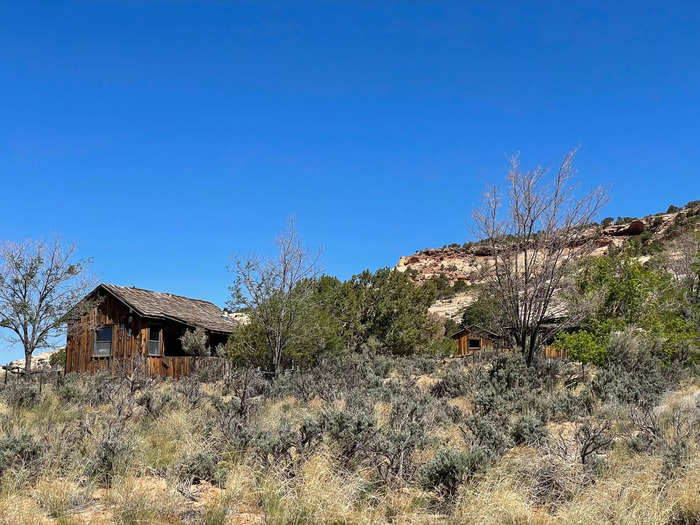
The exterior of buildings at the ghost town in Utah. Monica Humphries/Insider
Source: Atlas Obscura
In response, Ogden founded Home of Truth in Dry Valley, and by 1935, 100 followers joined the commune, Atlas Obscura reported. But as quickly as the religious colony formed, it fell apart. By 1937, seven people remained and the abandoned buildings turned into a ghost town, according to the same source.
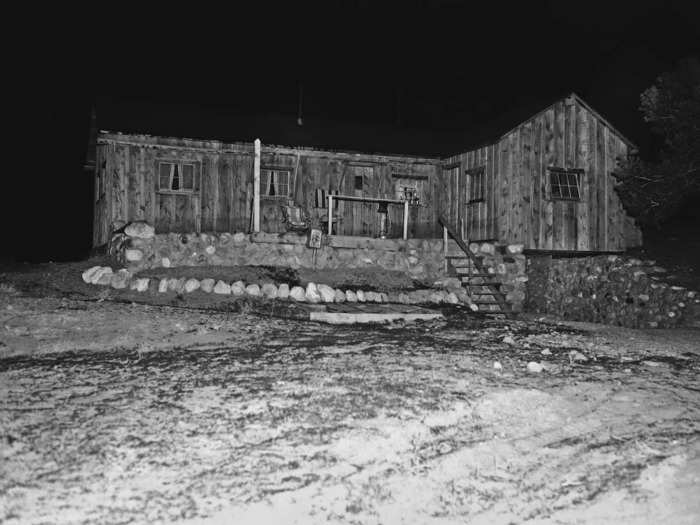
A photo of Home of Truth in Utah from 2011. Associated Press
Source: Atlas Obscura
In May, I drove through southeast Utah's red sandstone desert and sagebrush terrain to explore the abandoned town. It's located outside of Monticello, Utah, near the entrance to The Needles section of the Canyonlands National Park.
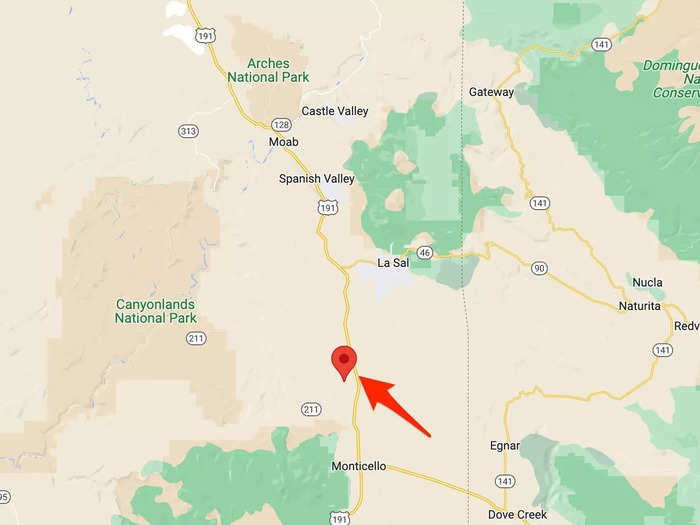
As arrow points to the Home of Truth ghost town in relation to Canyonlands National Park and Moab, Utah. Google Maps
As I approached the town's coordinates, a massive rock came into view, and I knew I was close. According to Atlas Obscura, some believe Ogden's followers attempted to hollow out the rock to build a church inside, hence how it earned the name "Church Rock." In reality, ranchers dynamited a section to use as storage for salt licks and cattle feed, according to the same source.
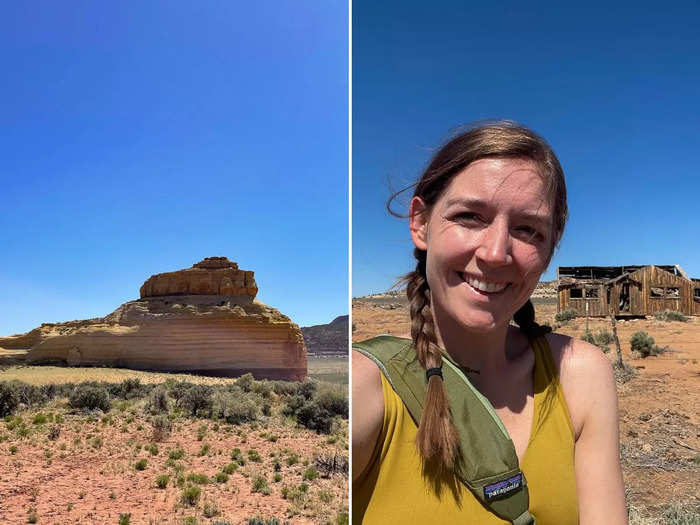
Side-by-side images of church rock and the author at the ghost town. Monica Humphries/Insider
Source: Atlas Obscura
As I approached the site, cows dotted farmland. To the left, I noticed a spattering of wooden buildings sitting below the mountainscape.
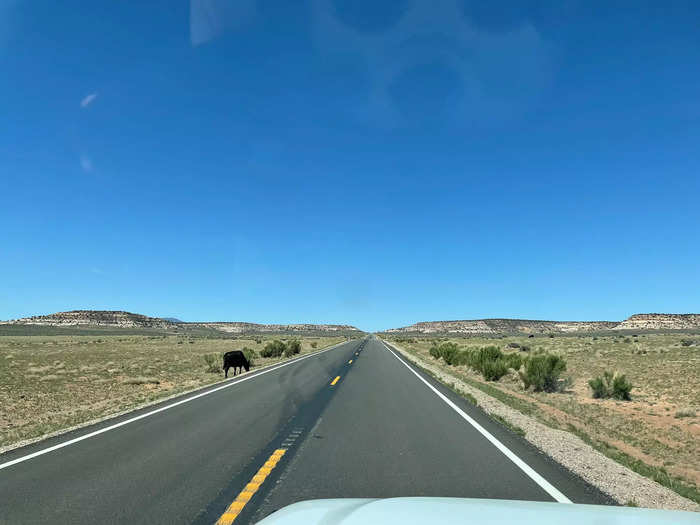
Utah State Route 211 where Home of Truth is located. Monica Humphries/Insider
According to The Canyon Country Zephyr, Home of Truth was divided into three areas called portals. As I turned onto a dirt path, half a dozen wooden structures came into view, which formed one portal.
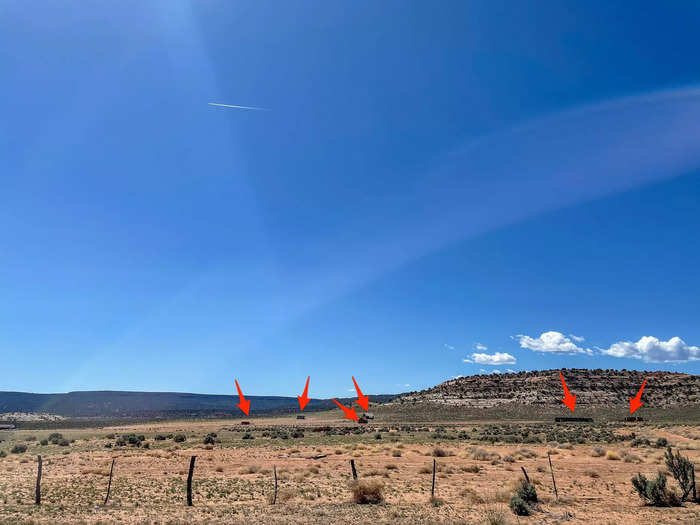
Arrows point to abandoned buildings that made up part of the ghost town. Monica Humphries/Insider
Source: The Canyon Country Zephyr
Today, the ghost town is privately owned, and Atlas Obscura reported that its new owners are restoring the buildings for tours. In May, I could only see the ghost town standing on the shoulder of Utah State Route 211. But even from a distance, I was fascinated by the remains of the colony.
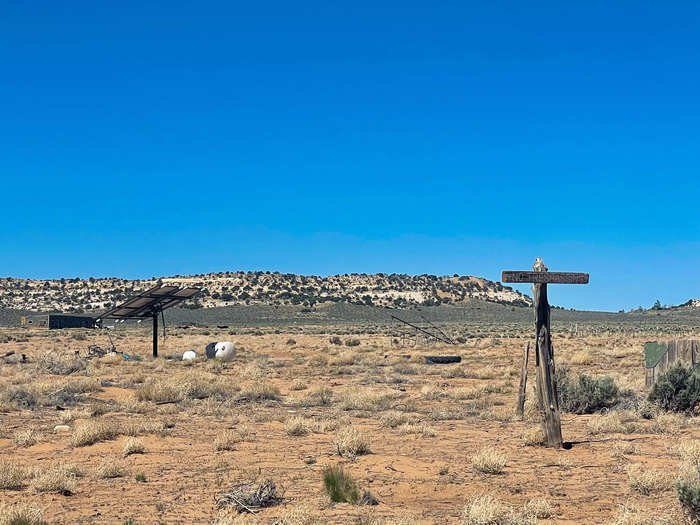
A no trespassing sign instructs visitors not to cross into the fenced area. Monica Humphries/Insider
I noticed the buildings appeared to be crumbling under the desert sun but they had a few signs of their previous life. I spotted a cross in the doorway of one wooden structure, and window frames falling out of another.
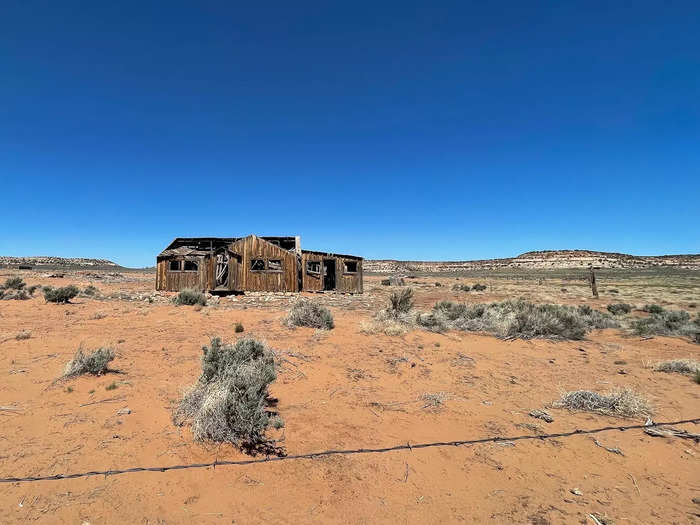
A dilapidated building at the Home of Truth ghost town. Monica Humphries/Insider
I looked around the empty buildings, which were built by the settlers, who lived without personal belongings, alcohol, tobacco, and meat, The Canyon Country Zephyr reported. During the desert's cold winters, the same source said they relied on wood stoves and homes insulated with newspaper.
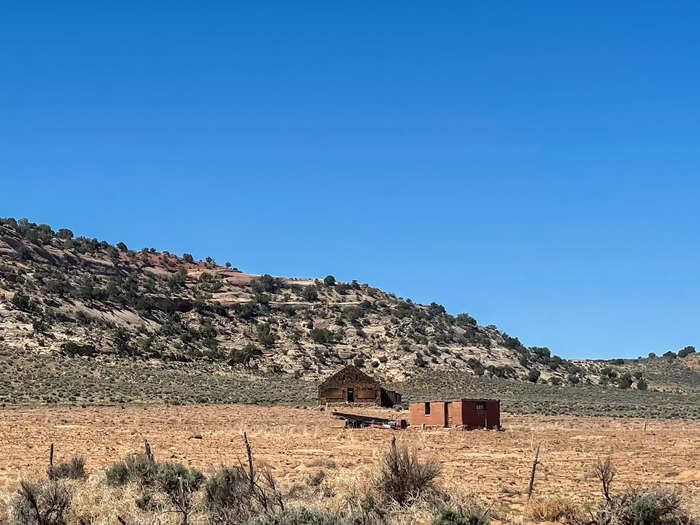
Two more abandoned buildings at the front portal of Home of Truth. Monica Humphries/Insider
Source: The Canyon Country Zephyr
As I drove farther down the road, a wooden sign bleached from the sun confirmed I had reached the second section of the ghost town.
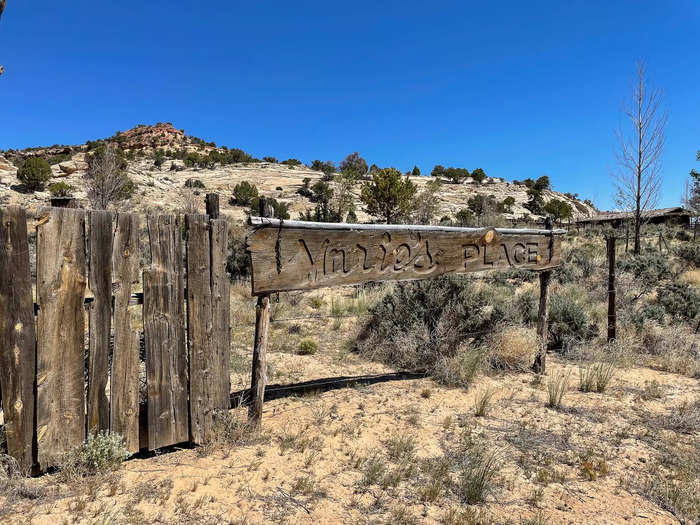
A sign reads "Marie's Place," which is part of the Home of Truth ghost town. Monica Humphries/Insider
I later learned through The Canyon Country Zephyr that this was called the Inner Portal and where Ogden lived. The settlers who joined her pledged to do whatever God dictated via Ogden through letters on her typewriter, the same source reported.
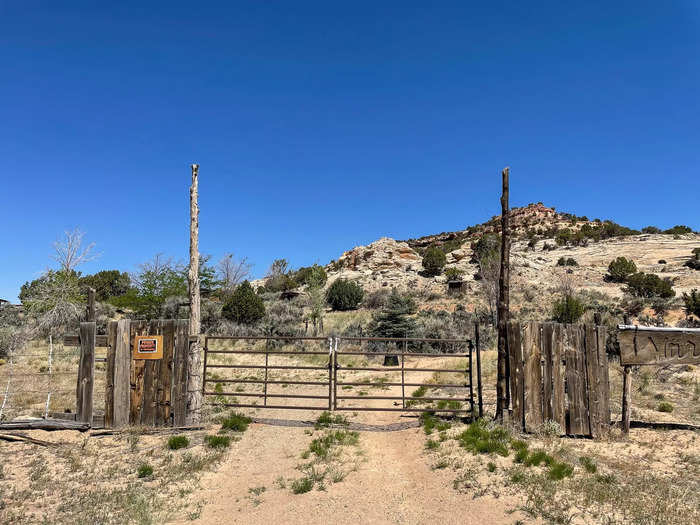
The second entrance to the ghost town. Monica Humphries/Insider
Source: The Canyon Country Zephyr
Ogden's home included a wraparound porch. The Canyon Country Zephyr stated that it had several bedrooms and a two-car garage underneath the structure.
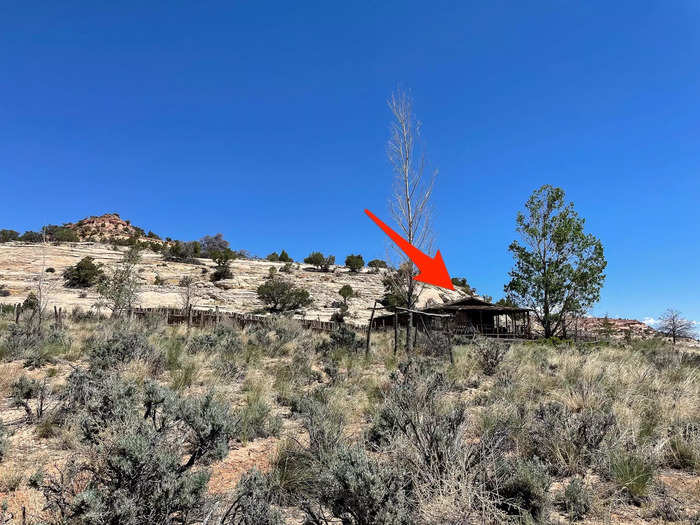
An arrow points to the building that was believed to be Marie Ogden's house. Monica Humphries/Insider
Source: The Canyon Country Zephyr
I wondered if items like the picnic table were new or part of the original commune.
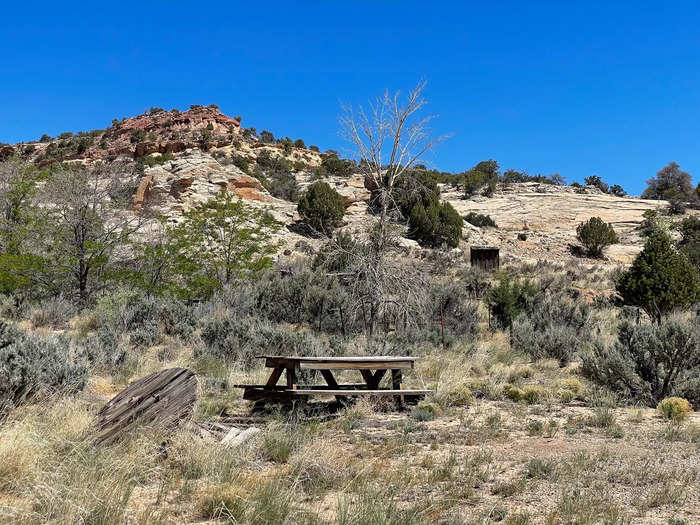
A picnic table at Home of Truth. Monica Humphries/Insider
While there were reported to be about 100 residents at the commune's peak, the town was largely deserted in 1937 following the aftermath of an attempt to resurrect a dead member of the commune, according to Atlas Obscura. A woman died of cancer and Ogden refused to bury her, insisting she could bring her back to life, the same source reported.
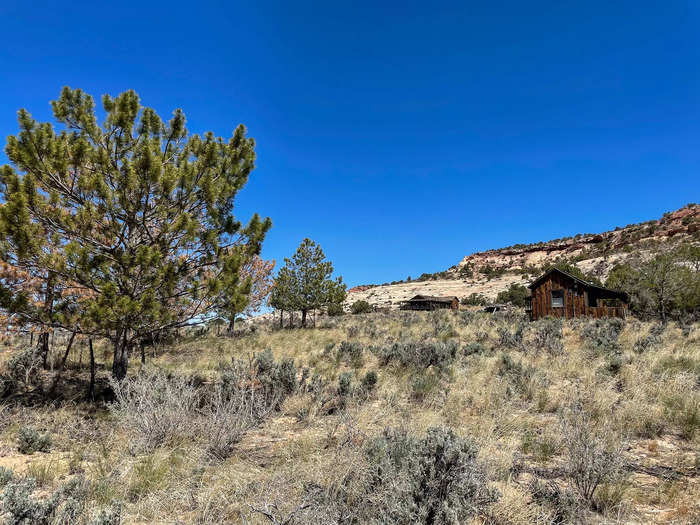
Buildings at the Inner Portal of the Home of Truth ghost town. Monica Humphries/Insider
According to Colorado's The Grand Junction Daily Sentinel, Ogden hadn't buried the dead follower, and every day, members of the colony gave the body salt baths to keep it clean and milk enemas for nourishment. The same source wrote that when word got out about the body, members became disenchanted with Ogden, and the colony was abandoned.
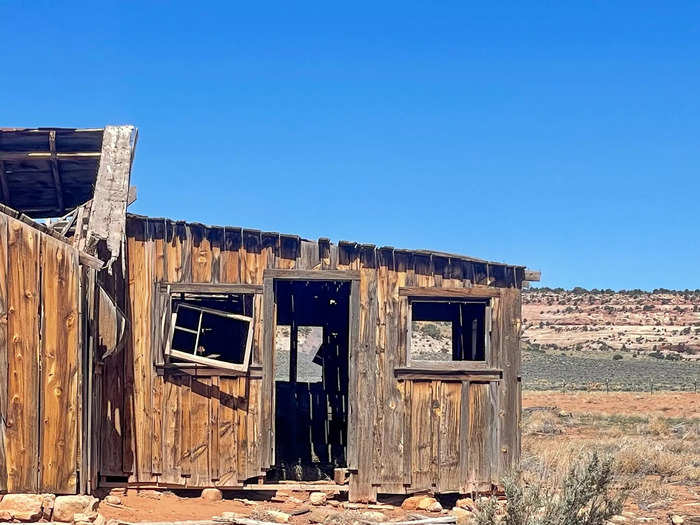
A close-up of one of the abandoned buildings. Monica Humphries/Insider
The details of the ghost town's creation and its demise were some of the wildest stories I have heard. As I merged back onto the road, I was thankful to be heading back to my life in Colorado instead of one under Odgen's leadership.
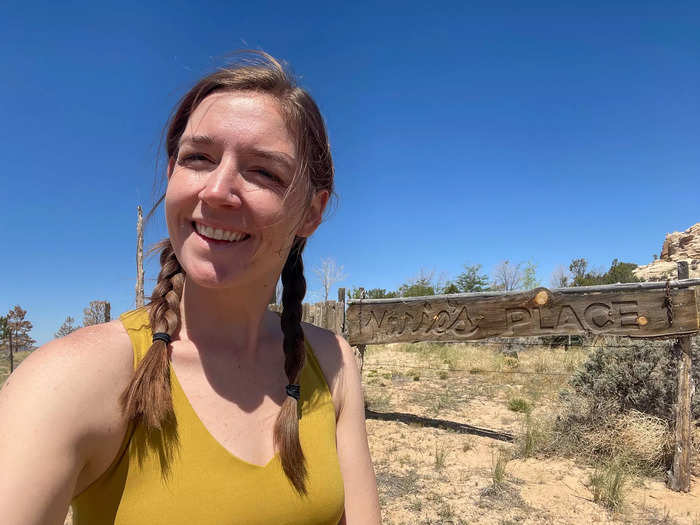
The author in front of the ghost town. Monica Humphries/Insider
READ MORE ARTICLES ON
Popular Right Now
Popular Keywords
Advertisement